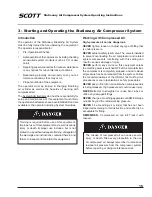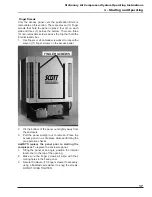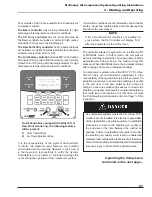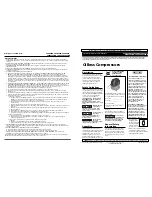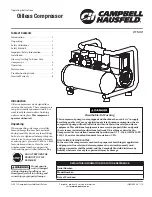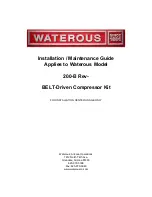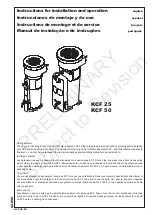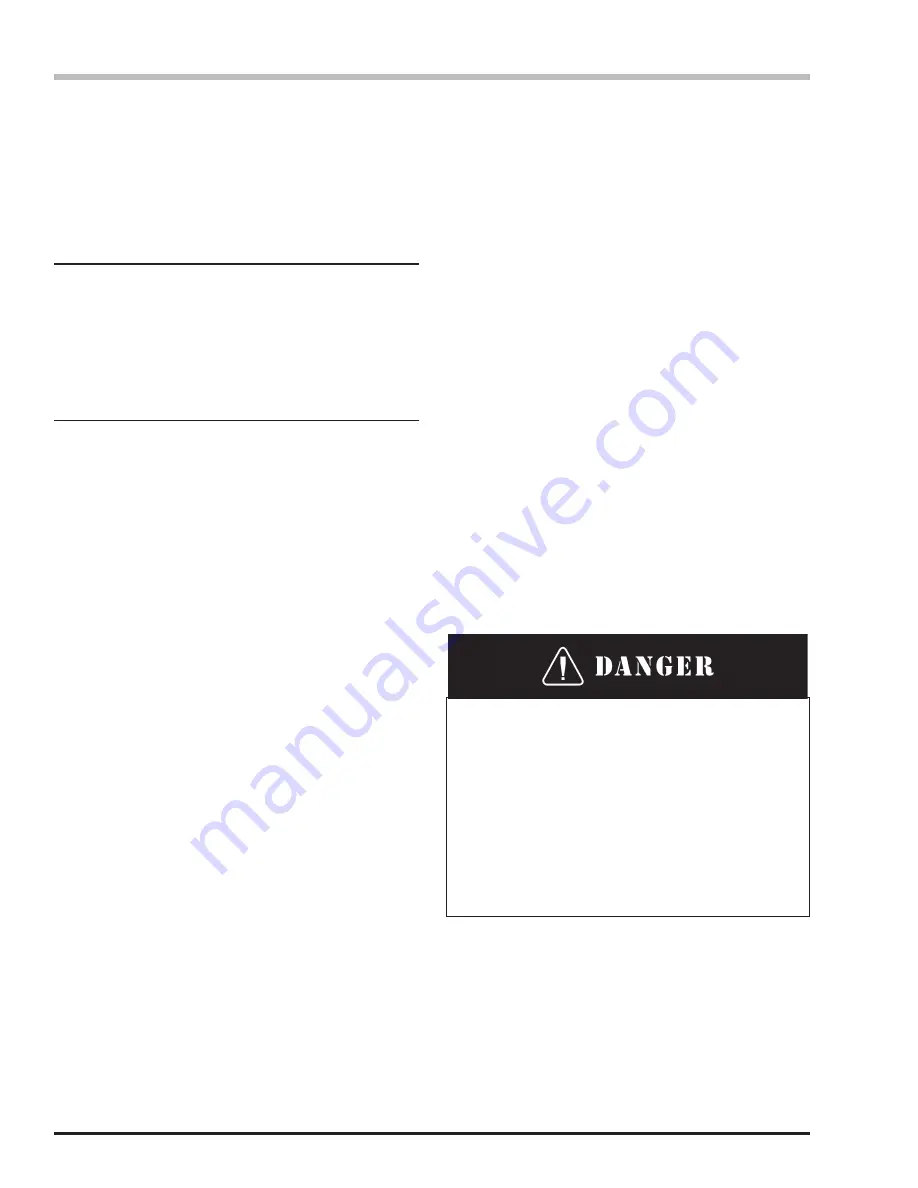
Stationary Air Compressor System Operating Instructions
3 - Starting and Operating
28
Charging the Storage System
The compressor may be equipped with either ASME
or DOT air storage cylinders, which are available from
SCOTT in a number of configurations. Regardless of the
storage configuration, SCOTT storage cylinders MUST
be installed by a SCOTT trained and certified service
technician and inspected periodically prior to use.
IMPORTANT
Establish and maintain an inspection procedure
for cylinders. Routine inspection of the equipment
is the responsibility of the organization using
the equipment, and must be in accordance with
technical and service guidelines provided by SCOTT
Safety.
Charging Storage Cylinders
1. If the storage cylinders have been visually inspected,
and are found to be in good operating condition,
allow the compressor to charge to the maximum
system pressure. Compressed air will automatically
be directed to the storage cylinders.
2. Monitor the storage pressure gauges.
Bulk volume:
the storage gauge is located on the
main control panel.
Cascade volume:
individual storage gauges are
identified on the Cascade Control Panel.
The time required for charging the air storage system
will depend on the number and pressure rating of the
storage cylinders. If cylinder pressure does not build
properly, contact a SCOTT certified service technician
to troubleshoot the system.
Cascade Volume Operation
The Cascade Control Panel includes individual gauges
and control valves for monitoring and controlling the flow
of compressed air in each cylinder. Each cylinder may
be isolated, or “shut off” to prevent compressed air from
entering or exiting the cylinder.
To isolate a cascaded cylinder, simply turn the control
valve
clockwise
to shut off the air flow. Turn the valve
counterclockwise
to allow the compressed air to flow as
normal.
Inspect the storage cylinders and verify the latest
inspection date.
Storage cylinder inspection should be
performed on a routine basis, as determined by specific
organization requirements.
DOT cylinders
must be visually inspected and
hydrostatically tested by a licensed cylinder re-tester
in accordance with the appropriate US Department
of Transportation (DOT) specification or applicable
DOT exemption, or in accordance with the appropriate
Transport Canada (TC) Permit of Equivalent Level of
Safety. Depending on when the DOT storage cylinders
were purchased, this may be five (5) or ten (10) years.
Cylinders that must be tested every five (5) years are
stamped with the
DOT and TC
numbers around the top
of the cylinder. Cylinders that must be tested every ten
(10) years are stamped with the number
ISO9809-02
around the top of the cylinder. Verify the required re-test
schedule for your DOT storage cylinders and establish
a procedure for haveing the cylinders re-tested to that
schedule.
The date of manufacture marked on the cylinder is also
the date of the first hydrostatic test. Subsequent test
dates are indicated by labels affixed to the cylinder.
If the required hydrostatic test date has expired for
the DOT cylinder, DO NOT USE the cylinder. Notify a
supervisor or other certified personnel responsible for
cylinder inspection.
Storage Cylinder Inspection
Do not refill any cylinder that is damaged or not within
the prescribed hydrostatic test date as determined
by the appropriate US Department of Transportation
(DOT) specification or the applicable DOT exemption
or in accordance with the appropriate Transport
Canada (TC) Permit of Equivalent Level of Safety.
Damaged cylinders may suddenly leak or rupture if
charged with compressed air. Failure to inspect for
damage and to empty the air from damaged cylinders
may result in personal injury or death.
ASME cylinders
do not require hydrostatic testing, but
include a drain valve and gauge. If installed, safety valves
on ASME cylinders must be tested on an annual basis.
ASME safety valves can by identified by a tag or label
showing traceability to the National Bureau of Standards
(NB) and a tamper evident seal. Some SCOTT storage
systems with ASME storage cylinders are protected by
single use rupture disks that cannot be tested.
Refer to specific ASME or DOT safety standards for
additional testing information.
Operating the Compressor Continued...
Summary of Contents for HUSH
Page 2: ......
Page 21: ...3 Starting and Operating Stationary Air Compressor System Operating Instructions 19 NOTES ...
Page 34: ...Stationary Air Compressor System Operating Instructions 4 Operator Maintenance 32 NOTES ...
Page 38: ...Stationary Air Compressor System Operating Instructions 5 Additional Features 36 NOTES ...
Page 45: ...43 Maintenance Record ...
Page 46: ...44 NOTES ...
Page 47: ......


